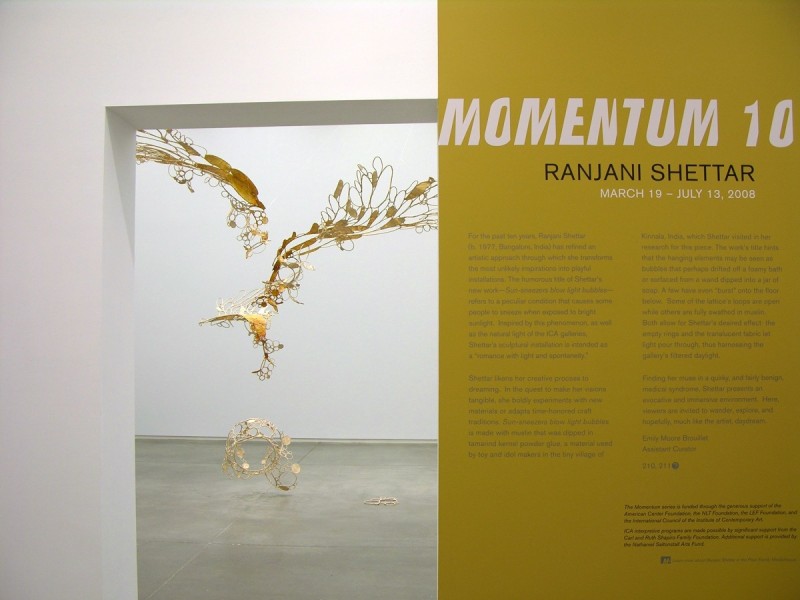
Ever lie back, look up at the clouds, and see faces, flowers, and other images? The Indian sculptor Ranjani Shettar does something like that in her delicate, airy works. Based in Bangalore, Shettar is a generation younger than Anish Kapoor, who left India to go to art school in London and still resides there.
Sun sneezers blow light bubbles, Shettar's installation at the ICA, is named after a condition that makes some people sneeze uncontrollably in the sun. In a brochure accompanying Shettar's show, ICA assistant curator Emily Moore Brouillet notes that while sun-sneezing, which has been known since Aristotle's time, affects more than a third of the population, its cause is not understood.
It's unlikely that viewers looking at Sun sneezers without knowing the title (or even knowing the title and its meaning) would guess what Shettar had in mind. For her, the disease is a point of departure. For much of her time, her installations are inspired by nature (fireflies, in the case of Fire in the Belly) or by the ancient crafts of India. The fuchsia-colored wooden beads of In Bloom, a piece that takes its cue from bougainvillea trees, were made by traditional toymakers.
Shettar is adventurous in her materials. Everything from beeswax to automotive paint to vulcanized latex finds its way into her works, which usually resemble drawings in the air. To create them, she first makes full-scale drawings, and fabricators turn them into steel armatures that will be hidden beneath surface skin. In the case of Sun sneezers, the armature is camouflaged by muslin dipped in glue made of tamarind kernel powder and then coated with lacquer.
The tone of the lacquer intensifies at some points as if the muslin had acquired a tan. Some of the strung-together lozenges and circles are filled in with fabric; others are left empty, to be filled in by the imagination. At first, the shapes seem random. They could be petals, butterflies, or clusters of Art Nouveau curves. They shift to twirl in the air. Watch long enough, and you will realize that they are arranged in three layers. The top layer resembles flowers coaxed open by the sun. Rounder, almost animal-like forms hang from these elements, and on the floor are four structures of interlocking circles that seem to have drifted down, or perhaps bubbled up from underneath the surface of a lake. Nothing in Sun-sneezers is lacking in grace.
-Christine Temin